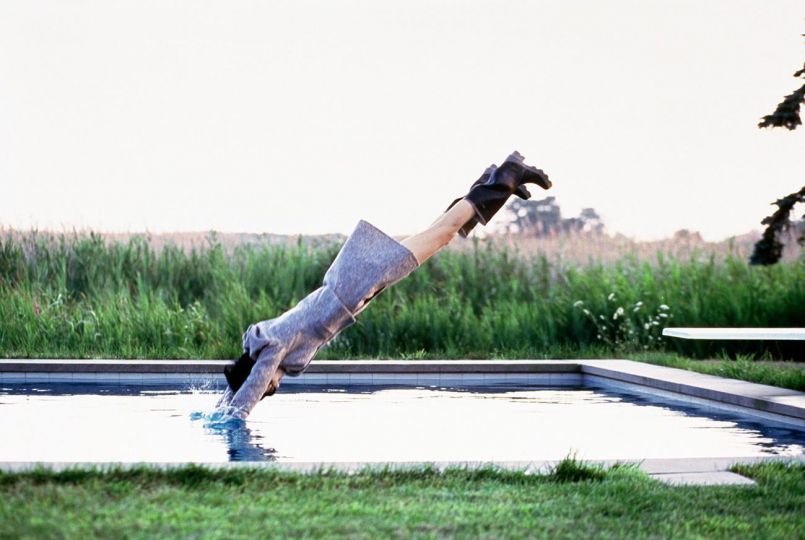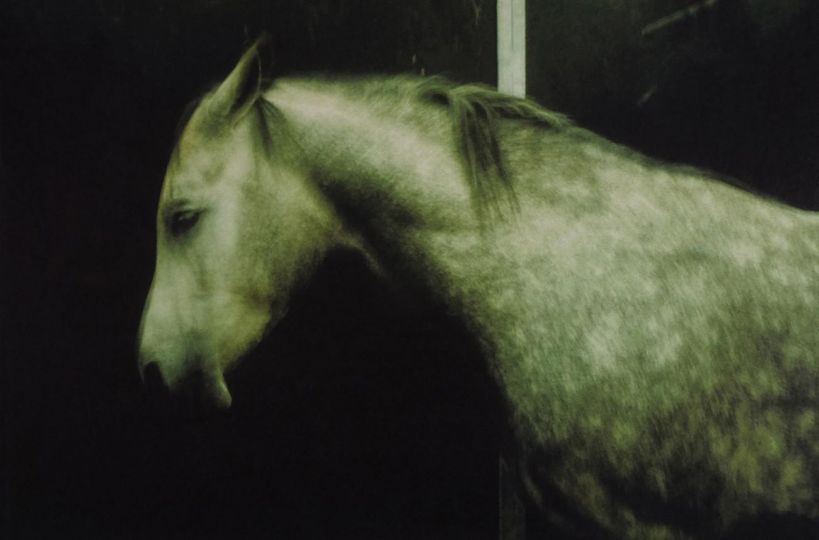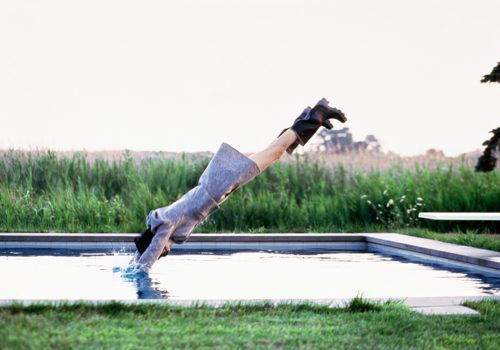For over thirty years, visual artist photographer Sophie Ristelhueber has been developing field works, and examining our world for all the marks, signs and other visual traces, like so many scars and wounds that streak its surface. A fan of exhibitions, installations or videos, this time we are offered a show with an eloquent title, a radical exercise that deserved some clarification. So, let’s meet.
Jean-Jacques Ader: Let’s talk about the title of this exhibition, let’s say, its rather expressive.
Sophie Ristelhueber : It’s true that I chose something quite incisive, and it’s not by chance but in relation to current world events; I wanted to express a fed-up feeling and also mark a pause in my work. A freeze frame. I hadn’t done anything for five years with the Poggi gallery and it was time to wake up a little? It’s the title that came first and then the rest followed. My gallery owner accepted this approach even though it wasn’t obvious, it could offend the public, but there it is, it’s done.
You had already put large photographs on the floor to exhibit in 1997 but this time it is even more pushed, apart from the photos of animals which are hung.
SR : Yes, the prints of The Campaign already overlapped because I did not want to give order to these images of Bosnia-Herzegovina, whereas here it is a journey through forty years of my work, except for the photos of animals which are unpublished.
Can we say that it is an accumulation of your works as the places and conflicts represented there have accumulated?
SR : Why not; at the same time I am no longer young and one conflict resembles another conflict, and I no longer have the imagination to represent all that. The exclamation in the title means all that: what have we done to this world? And the animals are there a bit like living reproaches. These animals that I photographed a long time ago and that I have always kept as traveling companions. I knew that one day they would appear, because the work exists when it is on the wall, and not before.
Here, it’s not even a drop, you didn’t want to hang these frames, it’s not out of weariness, is it?
SR: I can’t allow myself to use this word because there are always people who suffer, and for whom things aren’t moving forward. Let’s say that as an artist who tries to represent the world I feel a little helpless. Even if I don’t claim to say that my work can change anything, you have to try anyway.
You are precisely questioning the artistic representation of this world.
SR : Let’s say that beyond the document, it allows me to say something personal, even if everybody didn’t understand why I went to countries at war when I didn’t fit in with the event. It was said that I arrived after the conflict, which is stupid. For example, I was in Iraq in 2000 when the Americans only arrived three years later. I’m not trying to make art on the back of our poor planet, it’s a personal need to find meaning in all that, or not to find it.
Besides, the gallery audience might be disappointed not to see the images hidden by those in front.
SR : Yes, it’s an exhibition that also works on the frustration of those who visit it, and by metaphor on what’s happening behind? And that none of us really knows what’s going to happen behind, or after.
Can we say, even if you are not a photographer in the reporter sense of the term, that your work uses the main functions of photography?
SR : I don’t go out to take photos if I don’t have a defined project. I am far from the stereotype of the adventurer with a Leica, always ready to shoot; in that sense I don’t feel like a photographer. I always leave with a project, and often without any guarantee of success, it’s a bit like a leap into the void. It was difficult to anticipate what I was going to find once I got there. Nowadays, with the means of global communication, everything is seen almost instantly, after a bombing for example, whereas when I went to Beirut I had no idea what I was going to see, a few devastated neighborhoods or the whole city. Nowadays, we are unfortunately used to these modern cities in ruins, which are displayed even on social networks, but we are still powerless.
Are your images testimonies?
SR : I don’t think so. For example, the war in Kuwait, which wasn’t very well documented, where the press wasn’t completely free, I did some Sophie Ristelhueber, but I didn’t bear witness any more than anyone else. And when Libération called me ten years later, to illustrate the “anniversary” of the conflict, asking me for an image, I said no, and I asked them what would you going to illustrate with my work?
To return to the exhibition, all the photos of traces, marks and others are essentially metaphors, but not the photos of animals.
SR : That’s true, that’s why they have this presence in flesh and blood that strikes us all. As most of the time in my work there are no humans, but everything I photograph is linked to humans. I feel like I can talk about men and women better by not putting them in the images. And when I photographed large bodies, for Everyone, with their sutures or scars, I treated them like landscapes. Bodies and landscapes are the same thing. For me there is always a play with scales and a circumvention of the presence of humans. Animals, for once, have this simplicity of themselves that is quite striking. In the exhibition, they are there isolated, like the only trace of life that remains to us, and they seem to look at us and say “but what the hell have you done?”
In the text of “Details of the World” I noted that you didn’t really understand your attraction or obsession with wounds and scars; have you made any progress on that?
SR : Not really… I let the psychoanalytic mess do its work (laughs) that said, it’s consubstantial with my work. I need that to move forward, to evacuate and to represent it. You always have to believe in what you do, I’m sure of that, but the ins and outs of the meanderings of my skull, no! (smile) I don’t know and I’m not trying to find out… I might be really bothered if I found out.
Interview by Jean-Jacques Ader
“What the fuck!” exhibition by Sophie Ristelhueber at the Poggi gallery, in Paris, from November 5, 2024 to January 15, 2025
https://galeriepoggi.com/expositions/sophie-ristelhueber-what-the-fuck/
















